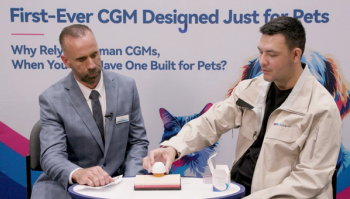
Six tips for a successful dermatologic visit (Sponsored by Pfizer Animal Health)
Learn how to perform an effective, thorough dermatologic visit, including the history, exam, diagnostic tests, and follow-up.
1. Allow enough time for an initial visit. Schedule a 30- to 40-minute visit to take a thorough history and perform complete physical and dermatologic examinations and diagnostic tests. Or, after taking a thorough history, have the client leave the pet at the hospital for several hours and set up a 30- to 40-minute discharge appointment with the client to review test results and your treatment plan.
( IMAGE: GETTY IMAGES)
2. Enlist the pet's primary caregiver. The person bringing in the pet should have knowledge of the pet's history, current medications, and diet. Remind the client to bring:
- Copies of all the pet's previous diagnostic test results, including skin histopathology reports and serum or intradermal allergy test results
- Current medications and flea control products
- Copy of the ingredients list from the pet's current diet, including all treats given.
3. Take a thorough history. Mail clients a dermatology history form to fill out before their appointments, post the form on your clinic's website, or have clients arrive 15 minutes early to fill it out. Important data to obtain include the pet's:
- Pruritus rating on a scale of one to 10 (one = occasional pruritus, 10 = constant severe pruritus that interrupts eating and sleeping)
- Age at onset of pruritus,dermatitis, or alopecia
- Duration of pruritus, dermatitis, or alopecia and any seasonality
- Other pets or owners affected with skin lesions or pruritus
- Response to previous treatments.
4. Perform a complete dermatologic examination. With good lighting, examine every inch of the pet's skin, including ear canals, and clip hair if needed to better visualize lesions. Lay the pet on its side to thoroughly examine the axilla, ventrum, groin, and interdigital skin. Draw an imaginary line across the middle of the pet's body and determine if lesions or alopecia are primarily on the front or back half of the body. Are the lesions symmetrical or asymmetrical? Document lesions and alopecia by type and extent on an outline of the dorsal and ventral surface of the pet.
5. Assemble a dermatology toolbox. Save time looking for misplaced items by placing a dermatology toolbox in each examination and treatment room. The toolbox should be kept clean and restocked weekly. For a complete list of tools to include and basic dermatologic diagnostic tests to consider, see Table 1
Table 1. Basic dermatologic diagnostic tests
6. Schedule a follow-up examination before the client leaves the hospital. The follow-up examination ensures continuity of care, allows you to judge response to therapy, and is another opportunity for client education. It also allows you to proceed with your diagnostic plan for underlying disease if treatment has not been successful. If treatment has been successful, the follow-up visit can help prevent recurrence of the original problem. Have the owners bring back their medication bottles to assess compliance.
To download a dermatologic history form, visit:
Newsletter
From exam room tips to practice management insights, get trusted veterinary news delivered straight to your inbox—subscribe to dvm360.






